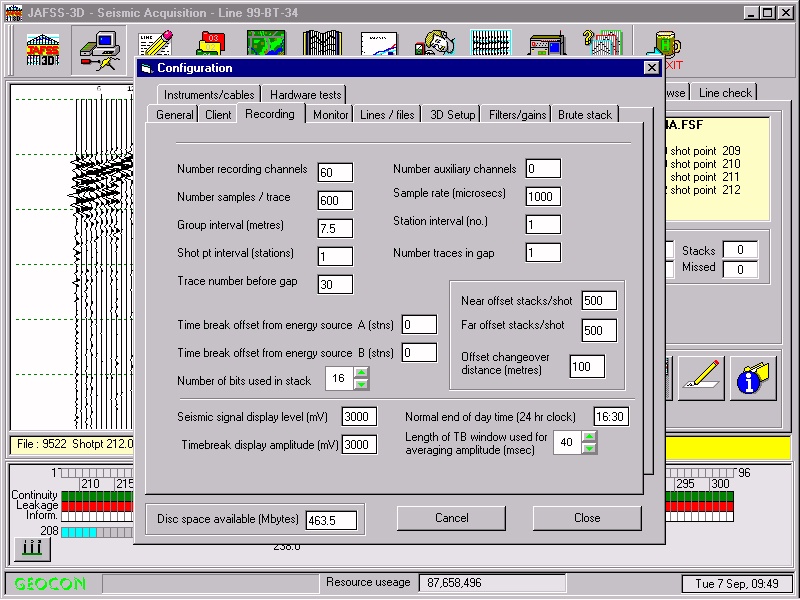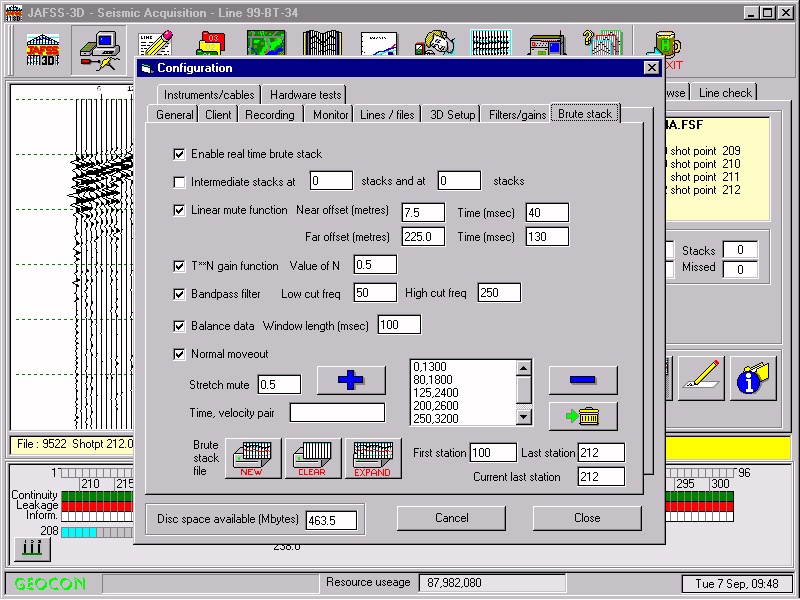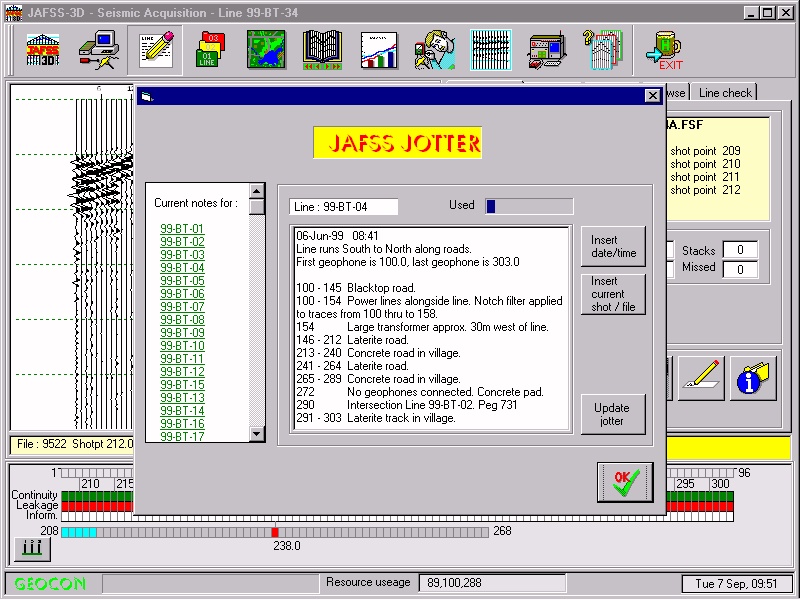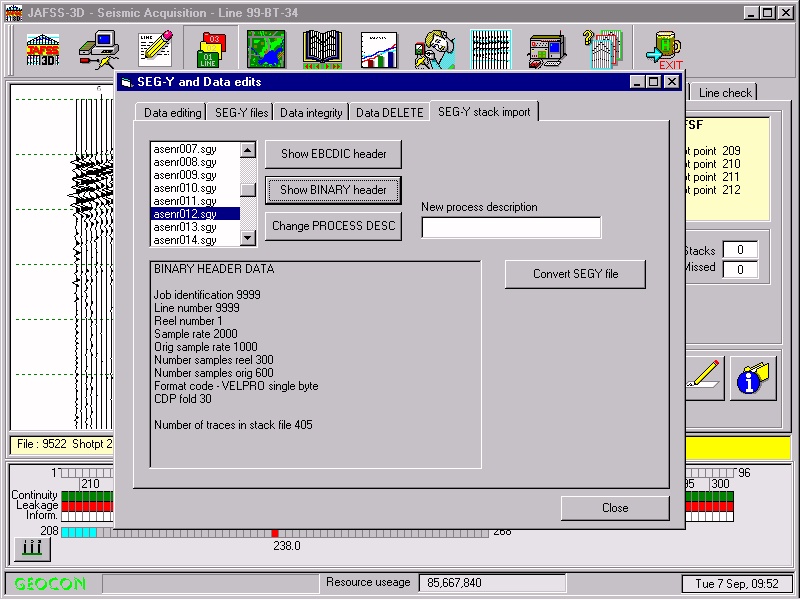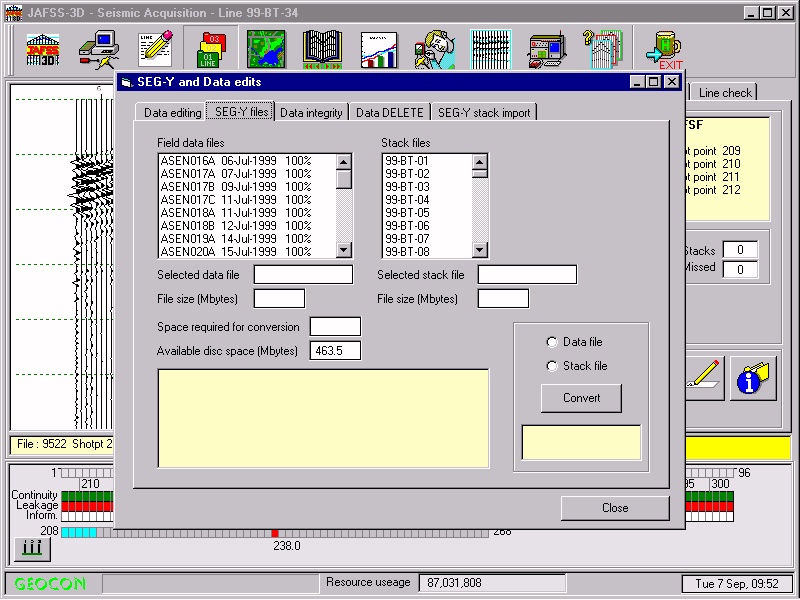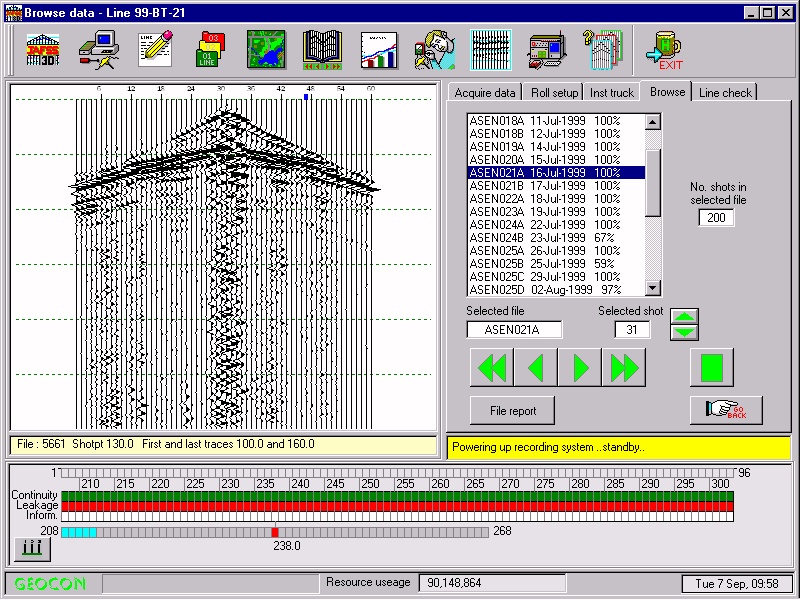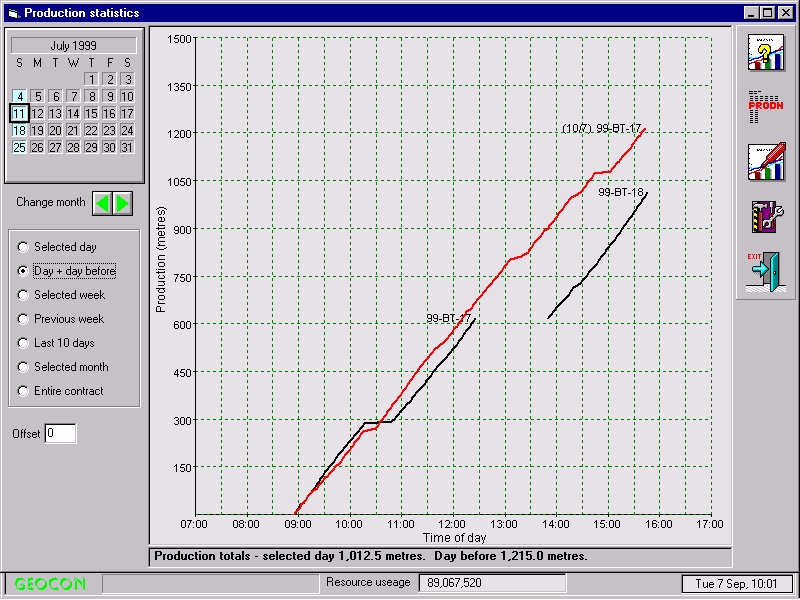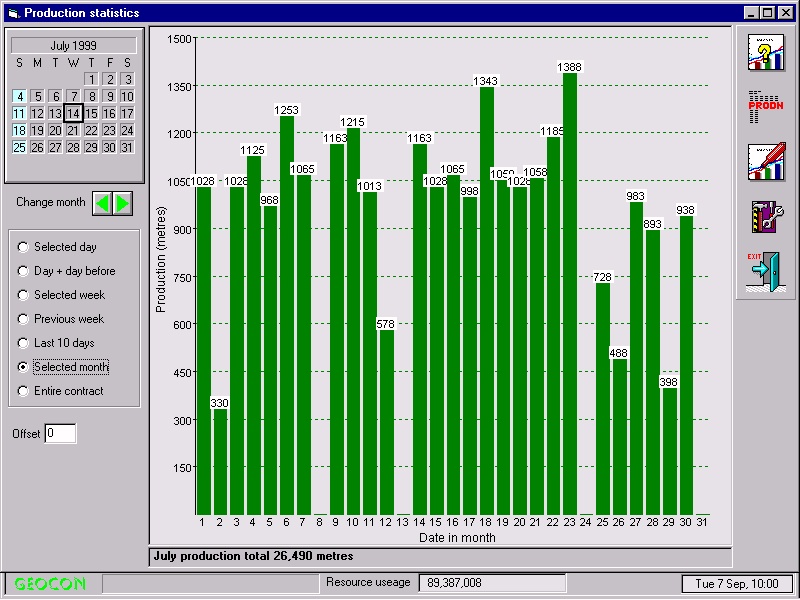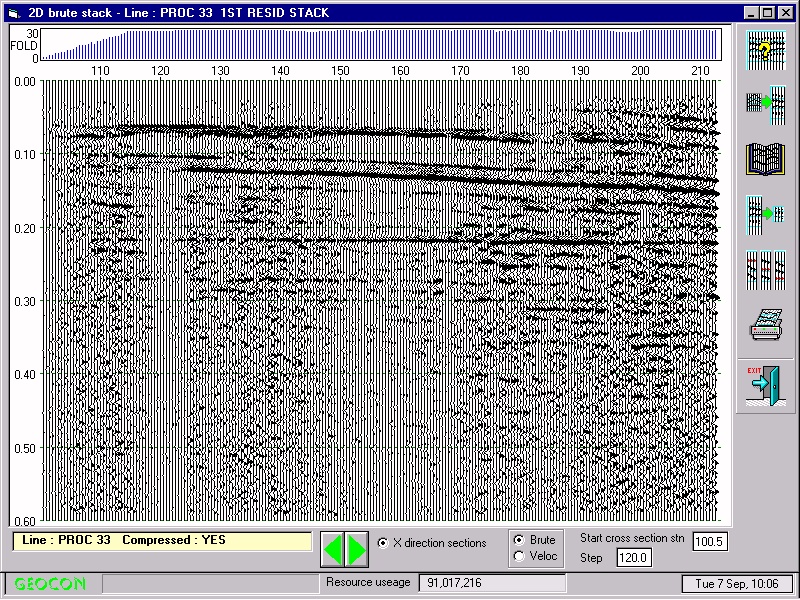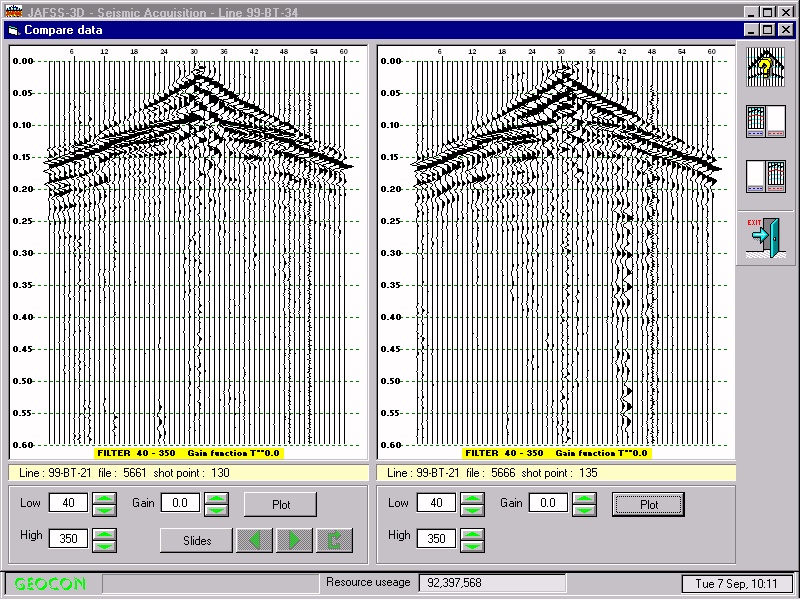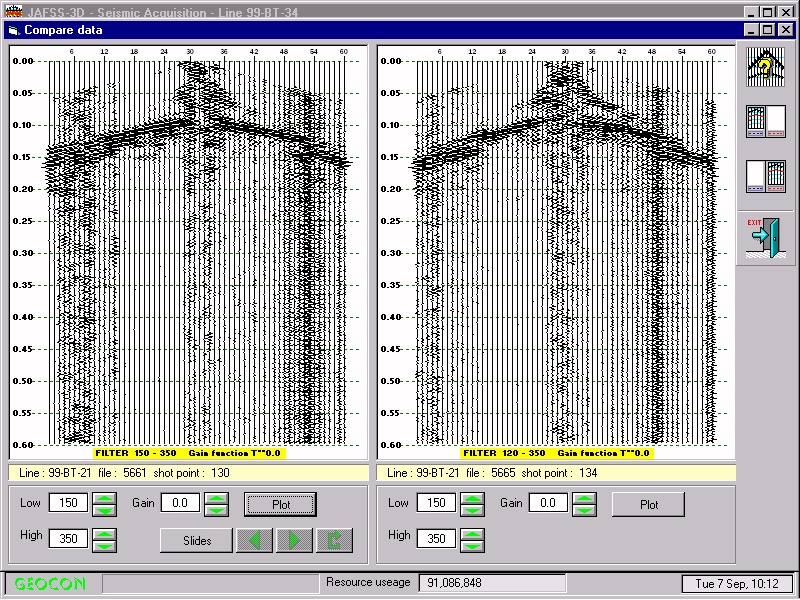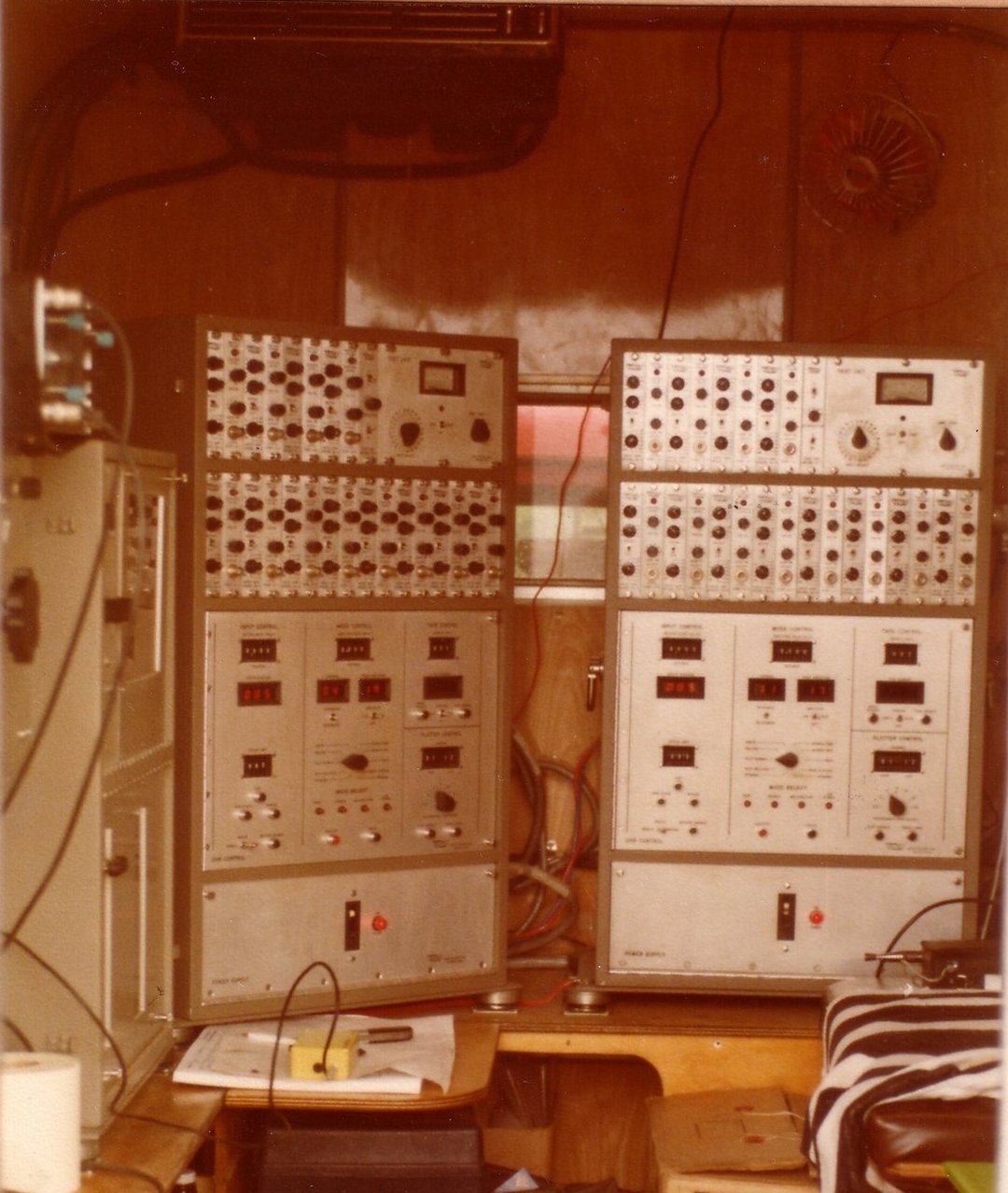
The development of FATRAT (v2) follows a long history of
seismic system development mainly centred on the Mini-SOSIE method of data
acquisition.
Mini-SOSIE method is NOT a vibrator
chirp type energy sweep but rather simply a series of single energy impulses
that are stacked to produce a final seismic record. The energy impulses arrive at a rate of maybe
10 times the record length of the required seismic data e.g.
source hits the ground at say a frequency of about 5-10Hz whilst the
seismic record is say 1 second in length.
This means pulses are occurring in such a way as to interfere with each
other as the previous pulse has not yet finished “listening” and hence is
degraded by other energy pulses. In
contrast a weight drop system is an impulse-based system where the rate of
drops of the source is slower than the record length, say a cycle time of 5-10
seconds whereas record length is 1 second.
Back
in the late 70’s in Australia a company called Velocity Data Pty Ltd purchased
the first ever Mini-SOSIE system to come to the country, an Input Output
DHR-1632. The system was 24 channels at
a
sample rate of 1 msec and the Mini-SOSIE stacking algorithm
was encoded in the instrument firmware. Amplifiers had manual adjustable gain
and filter settings and data was written to 9 track tape at 800 bpi.

The system was housed in a “dogbox” which was a Toyota
Landcruiser pickup. The system used 2 x
12V car batteries for power which were charged by a small engine mounted behind
the bull-bar of the truck and this drove both an alternator and an air
conditioning compressor to keep the operator and system cool.
The picture above shows the “dogbox” and the 2 BS65Y Wackers
used as an energy source. 2 Wackers were used to improve the rate at which
energy pulses were produced and hence shotpoint cycle times were improved.
I operated this system on behalf of Velocity Data as a young
consultant having just spent several years doing a PhD in Geophysics at the
University of NSW, which was never submitted as I decided to pursue my
Consulting career. I joined Velocity
Data as a one third shareholder around 1980.
During the early 1980’s Velocity Data did a lot of seismic
work with this DHR system for coal exploration all over Australia. The “dogbox” was upgraded to a newer vehicle
and the 12V batteries moved to a rear platform at back of the truck.

In 1984 Velocity Data split into two entities with myself taking the Mini-SOSIE
land seismic assets from the company and forming a new company called Velseis
Pty Ltd. The new company also acquired a
Sercel 338 seismic system in the late 1980’s which was then adapted
electronically to be able to conduct Mini-SOSIE data acquisition. This was done by feeding the digital data
stream from the Sercel floating point amplifier through a digital I/O card
which was in a Intel 386 based PC. The
Mini-SOSIE stacking was carried out in real time within the PC.
The image above shows an example of a Mini-SOSIE record on
the Sercel hybrid system.
This Sercel hybrid system was used in many contracts and
conducted both Mini-SOSIE and dynamite contracts in Australia and SE Asia. In 1992 I resigned from Velseis as it’s Manager
and as an employee and decided to live in Thailand. The Sercel system had just completed work for
Electricity Generating Authority Thailand in Lampang and I negotiated as part
of my exit from Velseis to keep the Sercel in Thailand and formed a local Thai
company called Geocon Co Ltd.
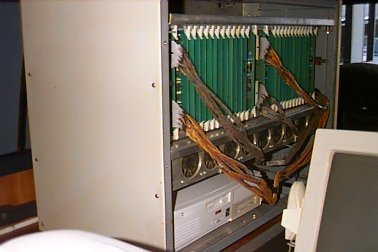
Around 1994 I conducted a field test using a National
Instruments 16 channel, 16 bit analog to digital converter board that plugged
into the PCI bus of a PC. I was able to
easily create a Mini-SOSIE algorithm with this card as it had excellent
software support and built in circular or double buffering as part of the
hardware.
This led to the decision in 1995 to build up a proper
seismic amplifier front-end for this board with software selectable gain and
filters. This system was called JAFSS
was a great success and was the first system in the world (to my knowledge) to
provide a real-time brute stack on a shot-by-shot basis during a normal day’s
recording. At this time, I also decided to register the website
address www.jafss.com/about.
JAFSS went into the field for a client on a Potash project in northern Thailand
and data quality was so much better both in terms of frequency content and
signal-to-noise ratio that I offered to re-shoot any line previously recorded by the SERCEL system at 50% normal rate.
The initial system was 60 channels and was interfaced to
standard roll-along 48 pair cables via a conventional I/O roll switch. Later the system was upgraded to 96 channels
and the roll-along was done in software rather than with the manual roll
switch. Gain of the seismic amplifiers
was around 75 dB.
The software control package was extensive and was running on a Windows 95 486
PC. Screen shots of various aspects of
field recording are shown here.

The software control package was extensive and was running on a Windows 95 486
PC. Screen shots of various aspects of
field recording are shown here.

A real time brute stack image shown above.
The JAFSS system was used up until 2003 when a client asked
for a 3D seismic survey. The JAFSS
system was very limited at 96 channels and so I set about upgrading to 200
channels.
The new 200 channel system became known as WOFSS and used similar amplifier
boards to the JAFSS system except that the selectable filters and individual
channel gains were dropped.
Gain of the amplifiers was increased a little, about 80dB,
and 4 multiplexor boards used to expand the National Instruments ADC board to a
theoretical total of 256 channels. The
system had a total of 208 channels installed with 13 amplifier boards of 8
channels each across 2 rows. Since the
National Instruments board could only handle a total data rate of 200
kilosamples per second the sample rate had to be reduced from 1msec to 1.2 msec
to allow comfortable data sampling on all 208 channels when double buffering.

The layout of an amplifier board is shown above.

This was a further development of the seismic amplifier to have better signal/noise ratio, higher gain and lower power consumption.
This amplifier replaced the older amplifiers in the WOFSS system and ran on +/- 5V rather than +/- 10V power rails.

A field trial was conducted with half the seismic channels in the WOFSS system using the original WOFSS amplifier and the other half using the new SUFSS amplifier.
Data processing was identical in both cases and the image above clearly shows that the NEW SUFSS amplifier did indeed have better signal/noise and better amplification resulting in better reflector continuity etc.

Around mid 2015 a proptotype of FATRAT V1 was field tested. The system used a PC-104 based computer with on-board ADC of 16 bits including a 2048 sample FIFO.
The board used was a Diamond Systems Helios HLV800 using a 800Mhz Vortex86DX CPU. The board with software cost around US$1,000 at the time and system was designed to be a 10 channel nodal module.
The system was Linux based and was fast enough to allow reading of serial port NMEA GPS messages whilst double buffering seismic data to a flash disc.
It was also based around 12V sealed lead-acid batteries as power source for ease of charging and higher power requirements compared to Fatrat V2.

